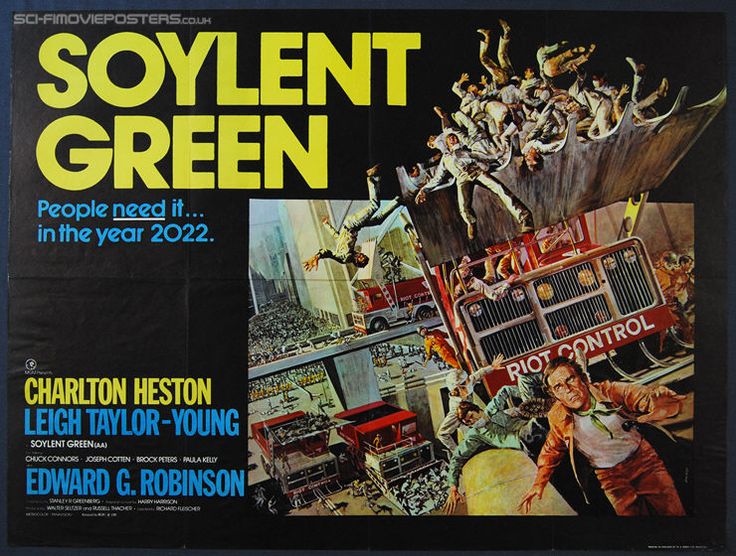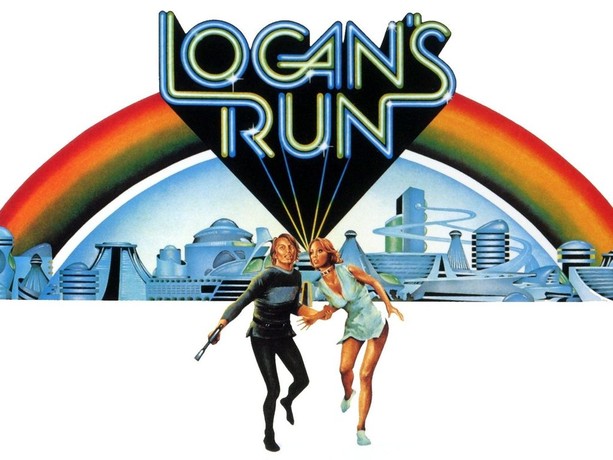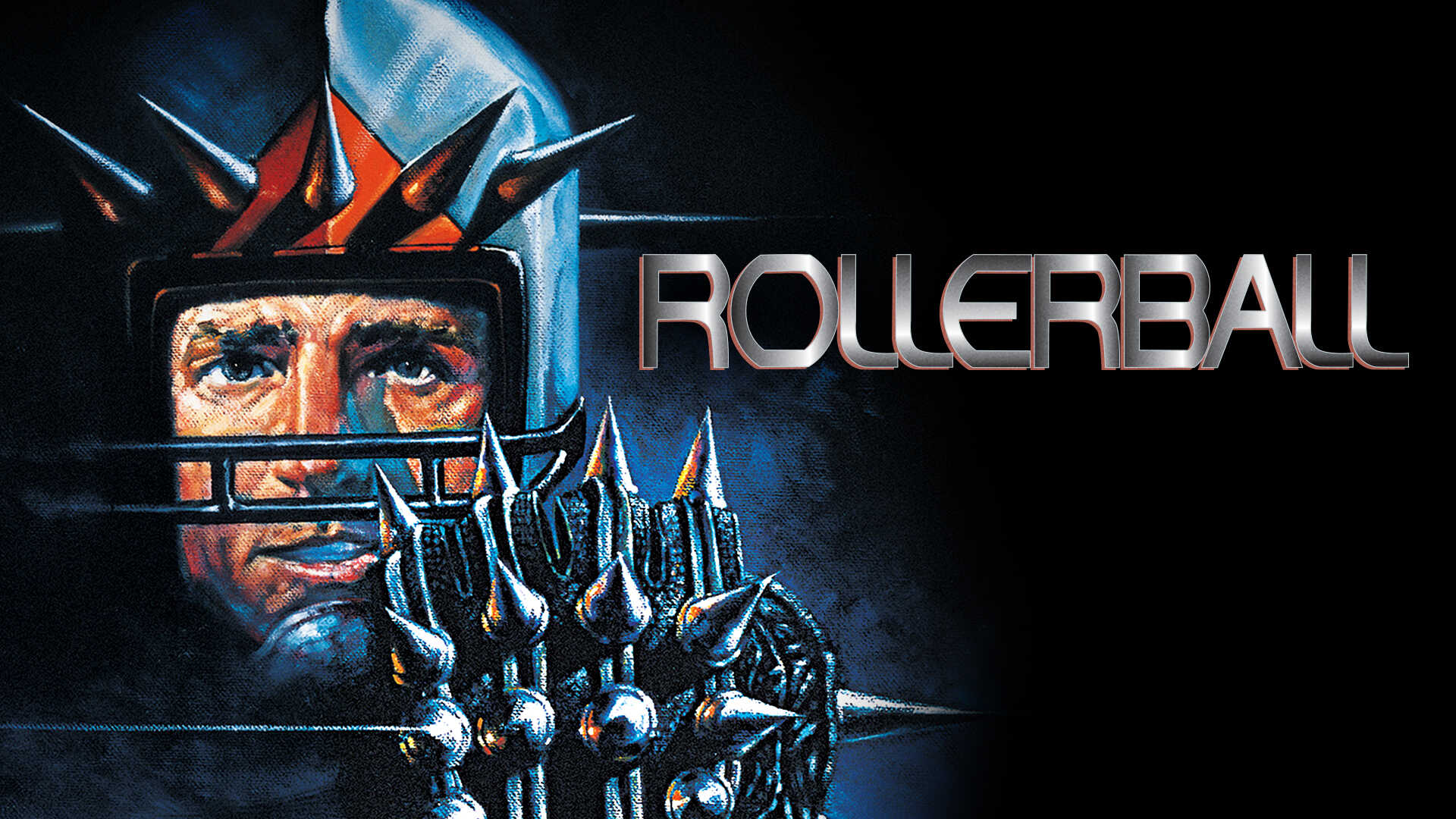Soylent Green is one of the most chillingly prophetic films of the 20th century. Released in 1973, it paints a dystopian vision of the future that, at the time, seemed distant and exaggerated—but looking back now, the film is more relevant than ever. At its core, Soylent Green isn’t just about a bleak future; it’s a warning. A warning about corporate overreach, environmental collapse, and the horrifying consequences of unchecked power. And yet, most people have never even seen it. It never reached the cultural heights of movies like Blade Runner or The Terminator, but if you go back and watch it today, it’s impossible to ignore just how terrifyingly accurate its predictions were.
To understand the message behind Soylent Green, we need to jump straight into the world it presents. The film takes place in the year 2022, where the world is overcrowded, resources are depleted, and the environment is in total collapse. Fresh food is almost non-existent. The rich elite live in luxury, hoarding the last remnants of real meat and vegetables, while the rest of society is crammed into slums, subsisting on synthetic food rations provided by a shadowy mega-corporation called the Soylent Corporation. The latest product, Soylent Green, is advertised as a revolutionary high-protein food source, “made from plankton” and designed to keep the starving population alive.
But as we soon learn, nothing in this world is as it seems.
Our protagonist, Detective Thorn, played by Charlton Heston, is a hard-nosed cop investigating the murder of a wealthy executive who was a high-ranking official at Soylent. What starts as a routine investigation quickly spirals into something much bigger. Through his investigation, Thorn begins to uncover horrifying truths about the world he lives in—truths that the ruling elite will do anything to keep buried. Alongside him is his aging roommate Sol Roth, an old man who still remembers the world before the collapse. Through Roth, we get one of the film’s most powerful elements: a direct contrast between the past and present, showing just how much humanity has lost.
At first, the film simply seems like a standard dystopian thriller. The rich control everything, the poor are left to rot, and the government is either powerless or complicit in maintaining this broken system. But as Thorn digs deeper, he realizes that the food crisis is even worse than he imagined. The oceans are dying. The plankton that was supposedly used to make Soylent Green? It’s long gone. Which raises the terrifying question: what is Soylent Green actually made of?
This question leads to the film’s most famous and horrifying revelation: Soylent Green is people.
It turns out that the government and Soylent Corporation have been secretly recycling human corpses into food, using mass euthanasia centers to process the dead into edible rations. The ultimate form of human commodification. The ultimate nightmare of unchecked corporate control.
The moment Thorn realizes the truth, his world—and the audience’s—completely collapses. And the worst part? Nobody seems to care. By the time he exposes the truth, the system is already too entrenched. The people are too powerless. And the film ends with his desperate, final warning falling on deaf ears.
This is why Soylent Green is so terrifying. Because unlike a lot of dystopian films that focus on rebellion, revolution, or breaking free from oppression, Soylent Green leaves us with a horrifying truth: what if it’s already too late? What if the system has become so powerful, so deeply ingrained, that even exposing its worst crimes changes nothing?
And when you look at our world today, it’s impossible not to see the parallels. In 1973, Soylent Green was dismissed as an exaggerated fantasy, a cautionary tale about a distant, impossible future. But now, in the 21st century, many of its warnings have already come true.
The environment is collapsing.
The rich are hoarding resources while the rest of society struggles to survive.
Mega-corporations control food production, manipulating supply chains and determining what the masses consume.
People are more disconnected from nature than ever, consuming synthetic, factory-produced food with no knowledge of where it actually comes from.
And the most chilling part? Just like in the movie, most people don’t even want to know the truth.
In Soylent Green, the horror isn’t just the system itself—it’s the apathy of the people living under it. The masses are too desperate to question anything.
Too tired, too beaten down by life to resist. When Sol Roth discovers the truth, he doesn’t rally a rebellion—he gives up. He checks into one of the euthanasia centers and allows himself to die, overwhelmed by the sheer hopelessness of it all. And in that moment, Soylent Green asks its audience an unspoken question: Will you do the same?
Because if you think this world is far away, you haven’t been paying attention. The biggest lesson of Soylent Green isn’t just about food—it’s about control. It’s about what happens when the ruling class consolidates power so completely that they can dictate life and death itself. When human beings are no longer seen as individuals, but as resources.
The truth is, we are already living in the world Soylent Green warned us about. The only difference is, we don’t have the final revelation yet. We don’t know what’s in the food we eat. We don’t know the full extent of the lies we’ve been fed. But if history has taught us anything, it’s that when you put profit above people, when you give unchecked power to those who already have everything, when you place survival itself in the hands of corporations—things always end the same way.


